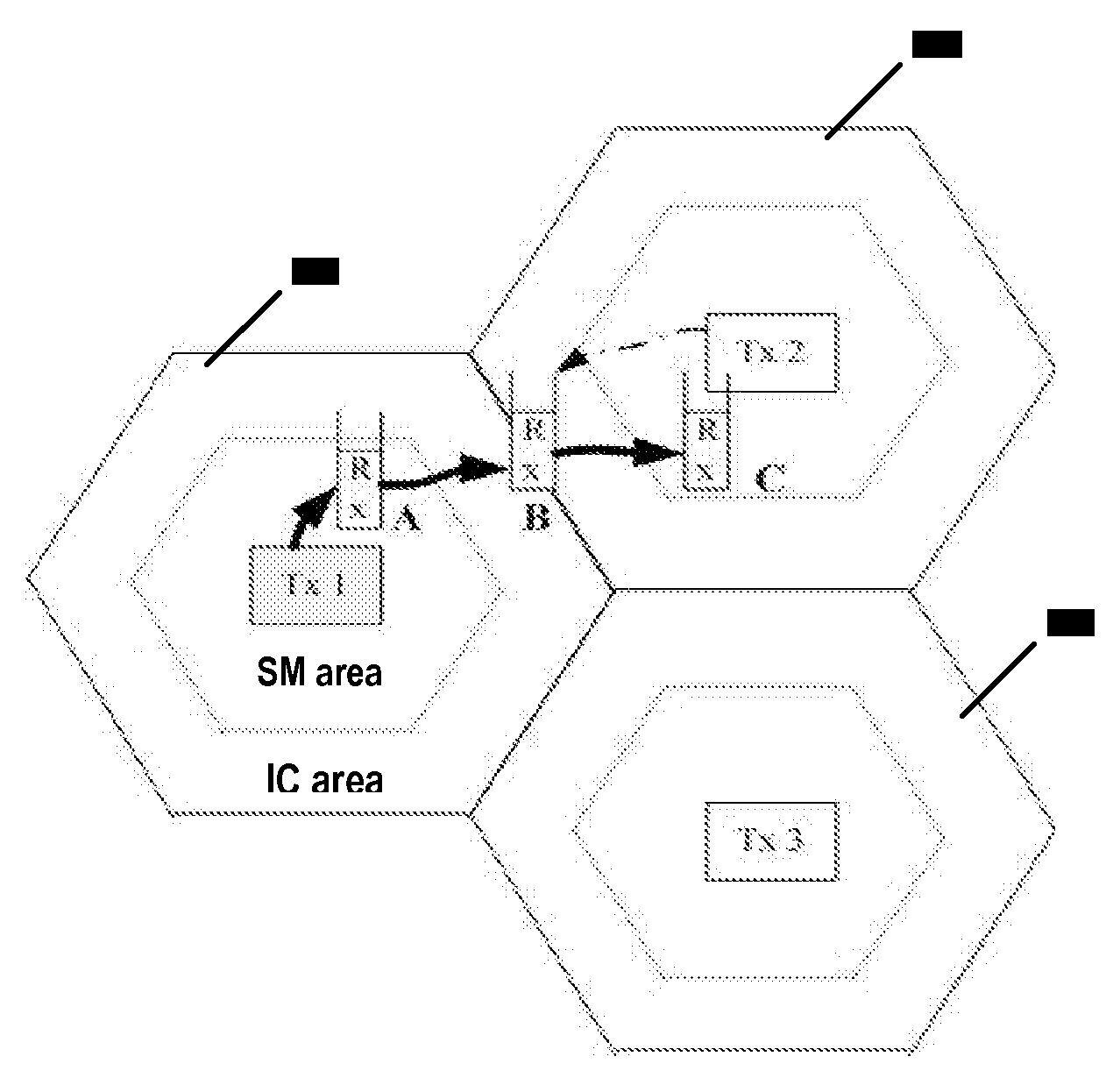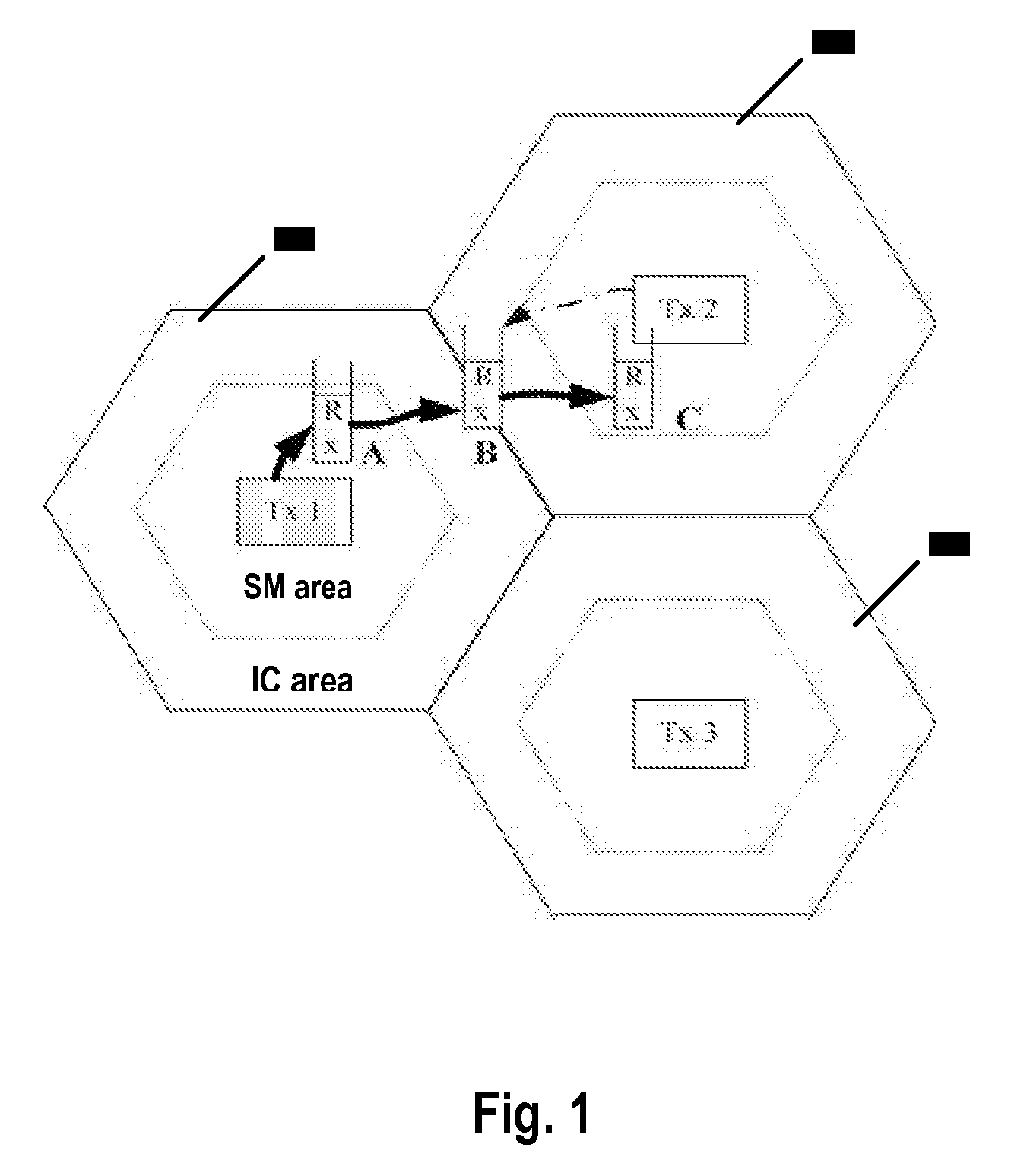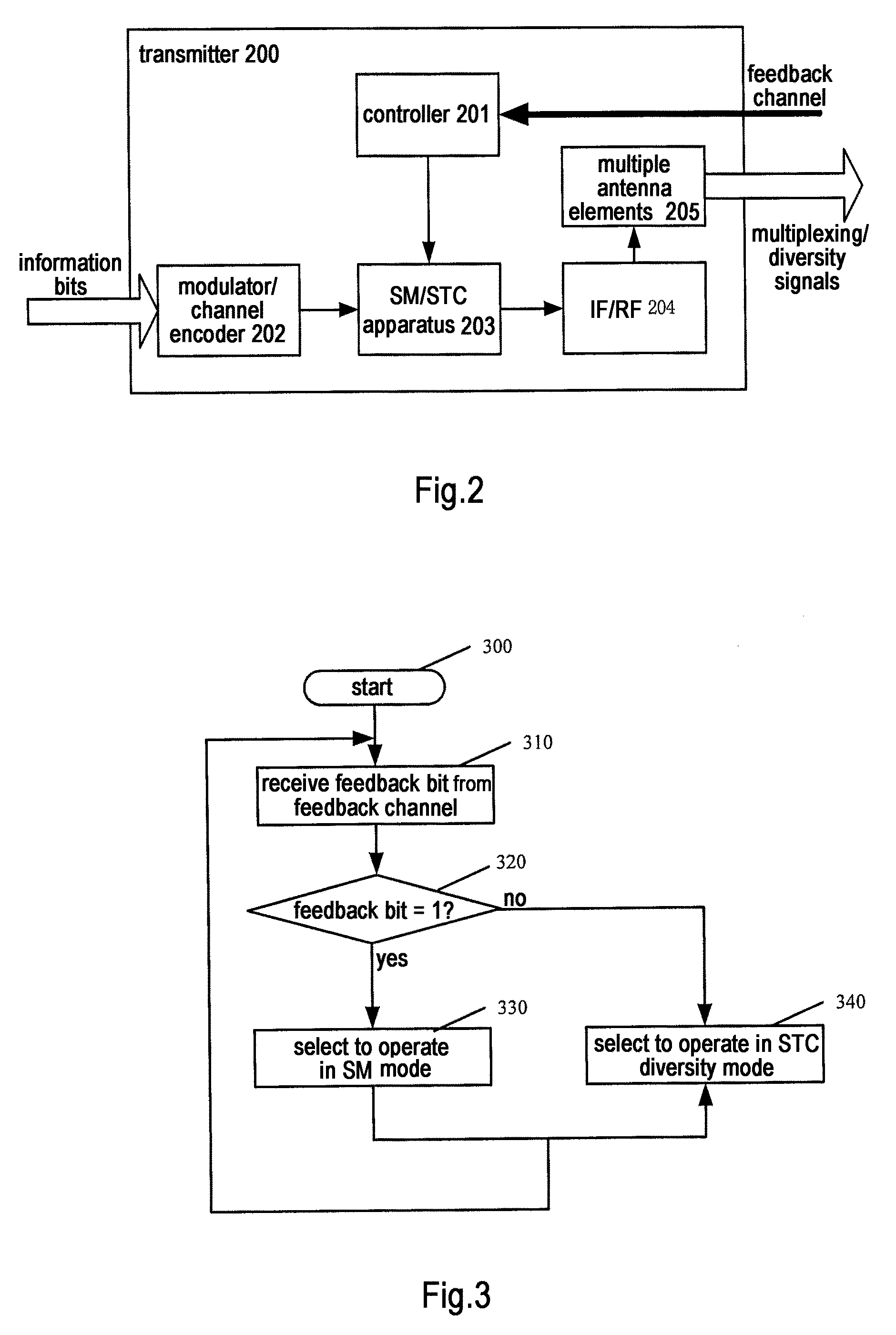Method and device for cancelling interference in wireless communication system
a wireless communication system and interference cancellation technology, applied in diversity/multi-antenna systems, digital transmission, polarisation/directional diversity, etc., can solve the problems of complex coordination operations among related transmitters, significant degeneration of capacity gain or diversity gain from mimo, etc., to improve system capacity and coverage, the effect of potential capacity gain
- Summary
- Abstract
- Description
- Claims
- Application Information
AI Technical Summary
Benefits of technology
Problems solved by technology
Method used
Image
Examples
Embodiment Construction
[0019] Referring to the accompanying drawings, embodiments of the present invention will be described in detail below.
[0020]FIG. 1 depicts a schematic view of a wireless communication system according to an embodiment of the present invention. The cellular wireless communication system as depicted in FIG. 1 shows, by way of example, three neighboring cells numbered 101, 102 and 103, respectively. Tx 1, Tx 2 and Tx 3 are corresponding transmitters in these three cells (e.g. base station of cell), and all the transmitters operate on the same radio frequency. Rx is a mobile receiver (e.g. a user equipment such as a mobile station), which is in wireless communication with the transmitters.
[0021] According to the embodiment of the present invention, each of cells 101, 102 and 103 is divided into two areas based on the inter-cell interference (ICI) level (in FIG. 1, cell 101 is taken for an example). The area inside the cell center is called the spatial multiplexing (SM) area, and the a...
PUM
 Login to View More
Login to View More Abstract
Description
Claims
Application Information
 Login to View More
Login to View More - R&D
- Intellectual Property
- Life Sciences
- Materials
- Tech Scout
- Unparalleled Data Quality
- Higher Quality Content
- 60% Fewer Hallucinations
Browse by: Latest US Patents, China's latest patents, Technical Efficacy Thesaurus, Application Domain, Technology Topic, Popular Technical Reports.
© 2025 PatSnap. All rights reserved.Legal|Privacy policy|Modern Slavery Act Transparency Statement|Sitemap|About US| Contact US: help@patsnap.com



